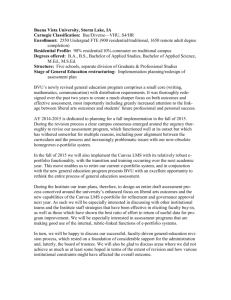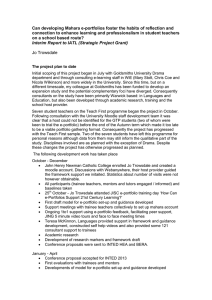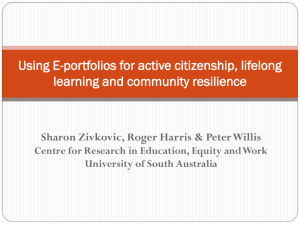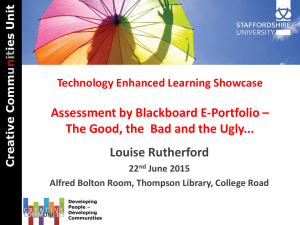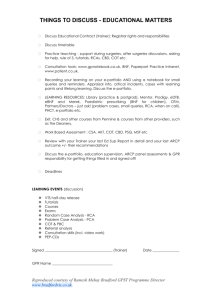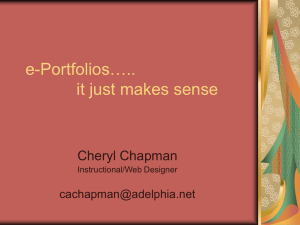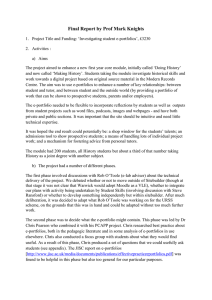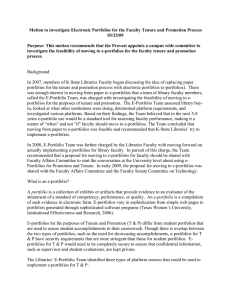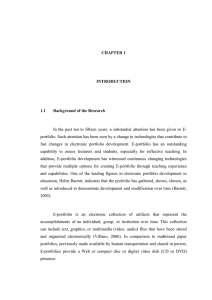Investigating student e-portfolios
advertisement
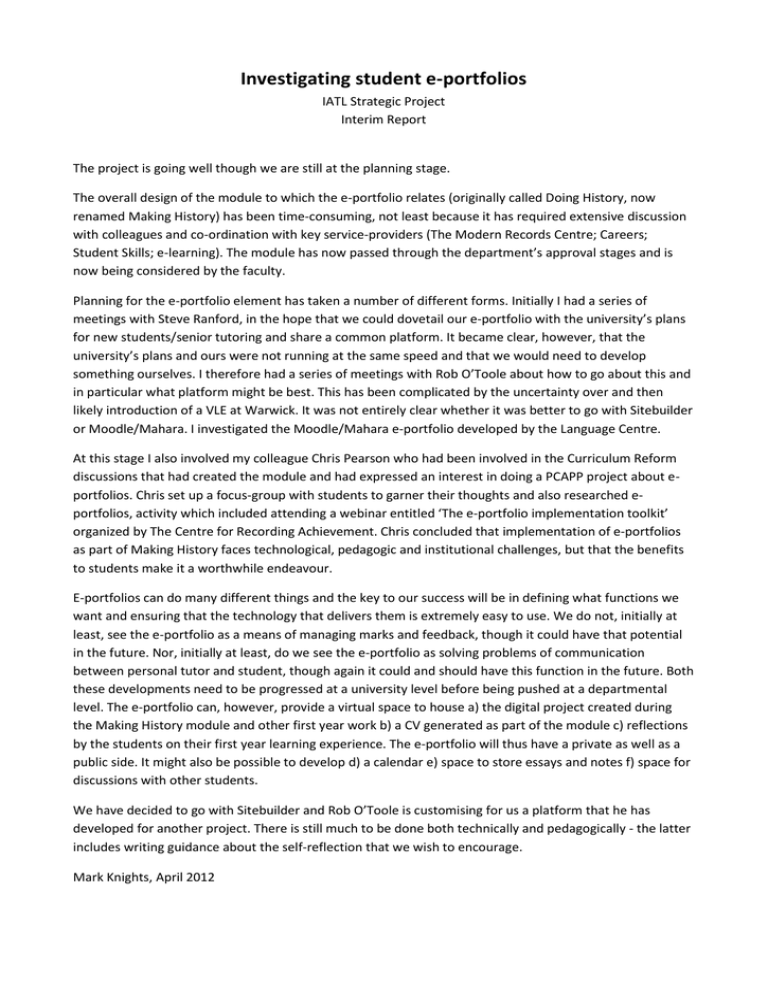
Investigating student e-portfolios IATL Strategic Project Interim Report The project is going well though we are still at the planning stage. The overall design of the module to which the e-portfolio relates (originally called Doing History, now renamed Making History) has been time-consuming, not least because it has required extensive discussion with colleagues and co-ordination with key service-providers (The Modern Records Centre; Careers; Student Skills; e-learning). The module has now passed through the department’s approval stages and is now being considered by the faculty. Planning for the e-portfolio element has taken a number of different forms. Initially I had a series of meetings with Steve Ranford, in the hope that we could dovetail our e-portfolio with the university’s plans for new students/senior tutoring and share a common platform. It became clear, however, that the university’s plans and ours were not running at the same speed and that we would need to develop something ourselves. I therefore had a series of meetings with Rob O’Toole about how to go about this and in particular what platform might be best. This has been complicated by the uncertainty over and then likely introduction of a VLE at Warwick. It was not entirely clear whether it was better to go with Sitebuilder or Moodle/Mahara. I investigated the Moodle/Mahara e-portfolio developed by the Language Centre. At this stage I also involved my colleague Chris Pearson who had been involved in the Curriculum Reform discussions that had created the module and had expressed an interest in doing a PCAPP project about eportfolios. Chris set up a focus-group with students to garner their thoughts and also researched eportfolios, activity which included attending a webinar entitled ‘The e-portfolio implementation toolkit’ organized by The Centre for Recording Achievement. Chris concluded that implementation of e-portfolios as part of Making History faces technological, pedagogic and institutional challenges, but that the benefits to students make it a worthwhile endeavour. E-portfolios can do many different things and the key to our success will be in defining what functions we want and ensuring that the technology that delivers them is extremely easy to use. We do not, initially at least, see the e-portfolio as a means of managing marks and feedback, though it could have that potential in the future. Nor, initially at least, do we see the e-portfolio as solving problems of communication between personal tutor and student, though again it could and should have this function in the future. Both these developments need to be progressed at a university level before being pushed at a departmental level. The e-portfolio can, however, provide a virtual space to house a) the digital project created during the Making History module and other first year work b) a CV generated as part of the module c) reflections by the students on their first year learning experience. The e-portfolio will thus have a private as well as a public side. It might also be possible to develop d) a calendar e) space to store essays and notes f) space for discussions with other students. We have decided to go with Sitebuilder and Rob O’Toole is customising for us a platform that he has developed for another project. There is still much to be done both technically and pedagogically - the latter includes writing guidance about the self-reflection that we wish to encourage. Mark Knights, April 2012
